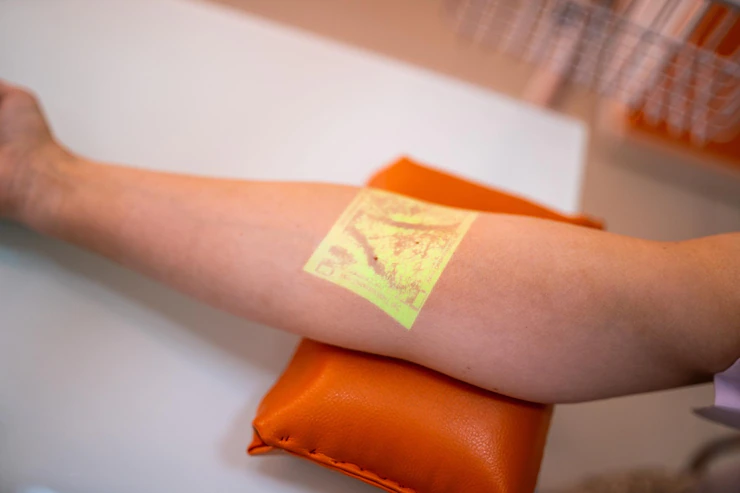
Vein finders are tools used by medical professionals to help them locate veins in the body. There are a few different types of vein finders on the market, and each type has its pros and cons.
In this blog post, we’ll take a look at the different types of vein finders and discuss which one might be best for you. So, what are the different types of vein finders? Keep reading to find out!
Vein Finder – An Introduction:

A vein finder is a device that uses infrared light to detect veins beneath the skin. It is also known as vascular scanners or hand-held transilluminators.
Vein finders are commonly used in healthcare settings, such as hospitals and clinics, to help locate veins for intravenous (IV) insertion.
Features –
Some common features that all vein finders share include:
- Dimensions – Most hand-held transilluminators are small enough to fit in the palm of your hand. Some models are even small enough to fit in your pocket.
- Weight – Most vein finders weigh less than 1 pound (0.45 kg).
- Cordless operation – Some newer models are cordless and battery-operated, making them even more portable.
- Infrared light – All vein finders use infrared light to illuminate veins beneath the skin. The depth of penetration of the light will vary from model to model.
- Price – Vein finders can cost anywhere from $20 to $1,000, depending on the features and quality.
Different Types of Vein Finders:

There are three main types of vein finders:
- Infrared light-emitting diode (LED) transilluminators,
- Near-infrared (NIR) laser scanners, and
- Doppler ultrasound devices.
1. Infrared LED Transilluminators
Infrared LED transilluminators are the most common type of vein finders. They use one or more LEDs that emit near-infrared light, which is then reflected from the veins beneath the skin.
The advantage of LED transilluminators is that they are relatively inexpensive and easy to use. However, they do have some disadvantages. One disadvantage is that the infrared light does not penetrate very deeply into the skin, so it can be more difficult to see the veins with this type of device.
Another disadvantage is that LED transilluminators can sometimes produce false positives, meaning that they may show veins that are not actually there.
2. Near-Infrared Laser Scanners
Near-infrared laser scanners use a low-power laser to emit near-infrared light, which is then reflected back from the veins beneath the skin.
The advantage of NIR laser scanners is that they can penetrate deeper into the skin than LED transilluminators, making them more effective at finding veins. However, they are also more expensive and may require more training to use properly.
3. Doppler Ultrasound Devices
Doppler ultrasound devices use sound waves to detect veins beneath the skin. The advantage of these devices is that they can penetrate very deeply into the skin, making them very effective at finding veins.
However, they are also more expensive and may require more training to use properly.
These vein finders are mostly used in hospital and clinical settings but are becoming more available for home use as well.
Benefits of using Vein Finders:

There are many benefits to using vein finders, both for patients and healthcare providers.
For patients, the benefits of using vein finders include:
- Reduced pain – Vein finders can help reduce the pain associated with IV insertion by helping to locate veins that are easier to access.
- Reduced anxiety – Some patients may feel anxious about having an IV inserted. Vein finders can help reduce this anxiety by helping to ensure that the IV is inserted into a vein that is easily accessible.
- Reduced time – Vein finders can help reduce the amount of time it takes to insert an IV, which may be especially beneficial for patients who need to have multiple IVs inserted.
For healthcare providers, the benefits of using vein finders include:
- Reduced time – Vein finders can help reduce the amount of time it takes to insert an IV, which may be especially beneficial for patients who need to have multiple IVs inserted.
- Reduced costs – Vein finders can help reduce the costs associated with IV insertion by helping to ensure that the IV is inserted into a vein that is easily accessible.
- Improved patient satisfaction – Vein finders can help improve patient satisfaction by helping to ensure that the IV is inserted into a vein that is easily accessible.
Drawbacks Associated with Vein Finders:
There are a few drawbacks associated with vein finders. One drawback is that they can be expensive. Another drawback is that they may require more training to use properly. Finally, some types of vein finders can produce false positives, meaning that they may show veins that are not actually there.
Despite these drawbacks, vein finders can be a helpful tool for both patients and healthcare providers. When used properly, they can help to reduce the pain, anxiety, and time associated with IV insertion. They can also help to improve patient satisfaction and reduce the costs associated with IV insertion.
Best Vein Finder in the Market:
If you are looking for the best vein finder in the market, we would recommend the Vein Finder by AimVein. This device uses near-infrared light to help locate veins beneath the skin. It is FDA approved and has been shown to be effective at finding veins. It is also easy to use and portable, making it a great choice for both home and hospital use.
FAQs
Why vein finders are important?
Vein finders are important because they can help to reduce the pain, anxiety, and time associated with IV insertion. They can also help to improve patient satisfaction and reduce the costs associated with IV insertion.
How do vein finders work?
Vein finders work by emitting light or sound waves that are reflected differently by veins than by other tissues. This reflection allows the vein finder to detect the presence of veins beneath the skin.
Are all the vein finders the same?
No, all vein finders are not the same. Different types of vein finders use different methods to detect veins. Some use light, while others use sound waves. Some are more expensive than others, and some may require more training to use properly.
Why are false positives a concern with vein finders?
False positives are a concern with vein finders because they can show veins that are not actually there. This can lead to unnecessary anxiety or pain for the patient. It can also lead to wasted time and money if the healthcare provider inserts the IV into a vein that does not exist.
Final Thoughts
We hope this article has helped you understand the different types of vein finders and how they work. A vein finder is a handy device that allows you to see the veins in your body.
This device can be used by health care professionals or individuals to locate veins for various reasons such as blood draws, IV starts, or medication injections.
There are three different types of vein finders: ultrasound, infrared, and electric. Each type has its own unique benefits and drawbacks.
As long as you understand how each type of vein finder works and what its advantages and disadvantages are, you can choose the best one for your needs. If you have any questions about vein finders, feel free to ask us in the comments below!
Read Also:




























